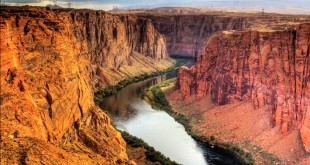Thinking of your trip to Cuba but wanting more than just the usual shopping and beaches this year? There are many fun places to stop and take in all that the country has to offer, but why not try the more remote areas, from viewing the unique flora to going for a horseback ride down to the beach or going spelunking into the natural caves to view the underground beauty native to this region? Here are some recommendations of sights to see that aren’t as clichéd or overrun.
Baracoa
This city is definitely off the beaten path in the remote eastern corner of Cuba. There are three noteworthy historical forts located here. To the east, the Fort Matachín has its houses and museums still there standing. To the west, the Fort La Punta houses a restaurant, with a smaller beach next to it. The third fort, El Castillo is on a steep hill with a commanding view over the town and both bays and is now known as Hotel El Castillo. There are two music venues available in this forgotten town; they are located near the central Parque Independencia, the touristy Flan de Queso, and the more traditional Casa de la Plana. Nearby are the rivers Miel and Toa, the latter of which has many waterfalls, the best known of which is ‘el Saltadero’, which is 17m high. The table mountain el Yunque (meaning the anvil) is a short distance to the west of Baracoa. This plateau remnant houses several unique species of ferns and palms due to its isolation.
 Meander the Malecón
Meander the Malecón The Malecón (officially named the Avenida de Maceo) is a broad esplanade, roadway, and seawall, which stretches for 8 km along the coast in Havana, Cuba. Starting at the mouth of Havana Harbor in the Old Havana area, out along the north side of the Centro Habana neighborhood, and finally ending in the Vedado neighborhood on the other side of town. Thanks to economic reforms in Cuba, new businesses are starting to appear on the esplanade. Along this walkway there are many monuments of importance to the people of Cuba and the general public. These monuments include General Máximo Gomez, Antonio Maceo, General Calixto García, and the Monument to the Victims of the USS Maine.
 Cayo Largo turtle nesting grounds
Cayo Largo turtle nesting grounds In 2008, a ban on harvesting of marine turtles was passed protecting three species that nest on the pristine Cuban beaches. Most of the important nesting sites in Cuba are now protected from poachers and access to some is now highly restricted. Cuba’s only ‘turtle farm’ operating since before the ban, called the Granja de las Tortugas located on Cayo Largo, works to protect the greens, hawksbills, and loggerheads (the three native species), which come ashore to nest between April and September. Cayo Largo is Cuba’s primary turtle nesting site. Each year, the farm’s employees collect these eggs on vulnerable beaches, to be incubated for two months in a protected environment within the farm. The hatchlings are then released to the sea. The employees collected 16,211 eggs in 2009 (up 15 percent over 2008), and the farm had a hatching rate of 82 percent. Visitors are welcome and you can even go on free nighttime tours to witness the females nesting. Plus, if you are visiting at the right time of the year you can participate in release programs for a small fee.
 Horse-riding
Horse-riding Cuba is home to some stunning locations that are made even more memorable by seeing them whilst atop a horse. Both the La Ermita and Los Jasmine’s hotels in the Vinales Valley can organize horse-riding trips for you, designed to showcase the scenic valleys. In Trinidad – another gorgeous area of the countryside – horse-riding trips can be arranged in another stunning locale just eight kilometers away from the Valle de Los Ingenios, where riders can enjoy traveling through a charming valley, whilst scattered ruins of old sugar mills dot the landscape. Varadero also offers to ride on Cuba’s largest beach, with 15 pesos buying an hour’s horse-ride along with this white, sandy and beautiful beach.
 Explore the caves
Explore the caves Of the entire spectacular tourist destination, within the country of Cuba there are not only the cultural heritage sites to go and visit, but also its wonderful natural attractions. You can’t afford to miss the beautiful mountain ranges and caves Cuba has to offer all its visitors, such as the amazing Cuevas de Bellamar, or Bellamar Caves. Whether large or small, they are all wonderfully attractive and breathtaking to behold. The caves have lots of gorgeous features, such as stalactites, stalagmites, natural pools, and sometimes archeological finds that are not able to be seen anywhere else in the world. Many people think of a trip to Cuba as a costly one, but don’t fear, as there are always plenty of fast holiday loans available. Book your trip, grab a long Mojito, and watch the sunset over a vista that many others might never get to see.

 Tourist Destinations World Travel Guides
Tourist Destinations World Travel Guides


